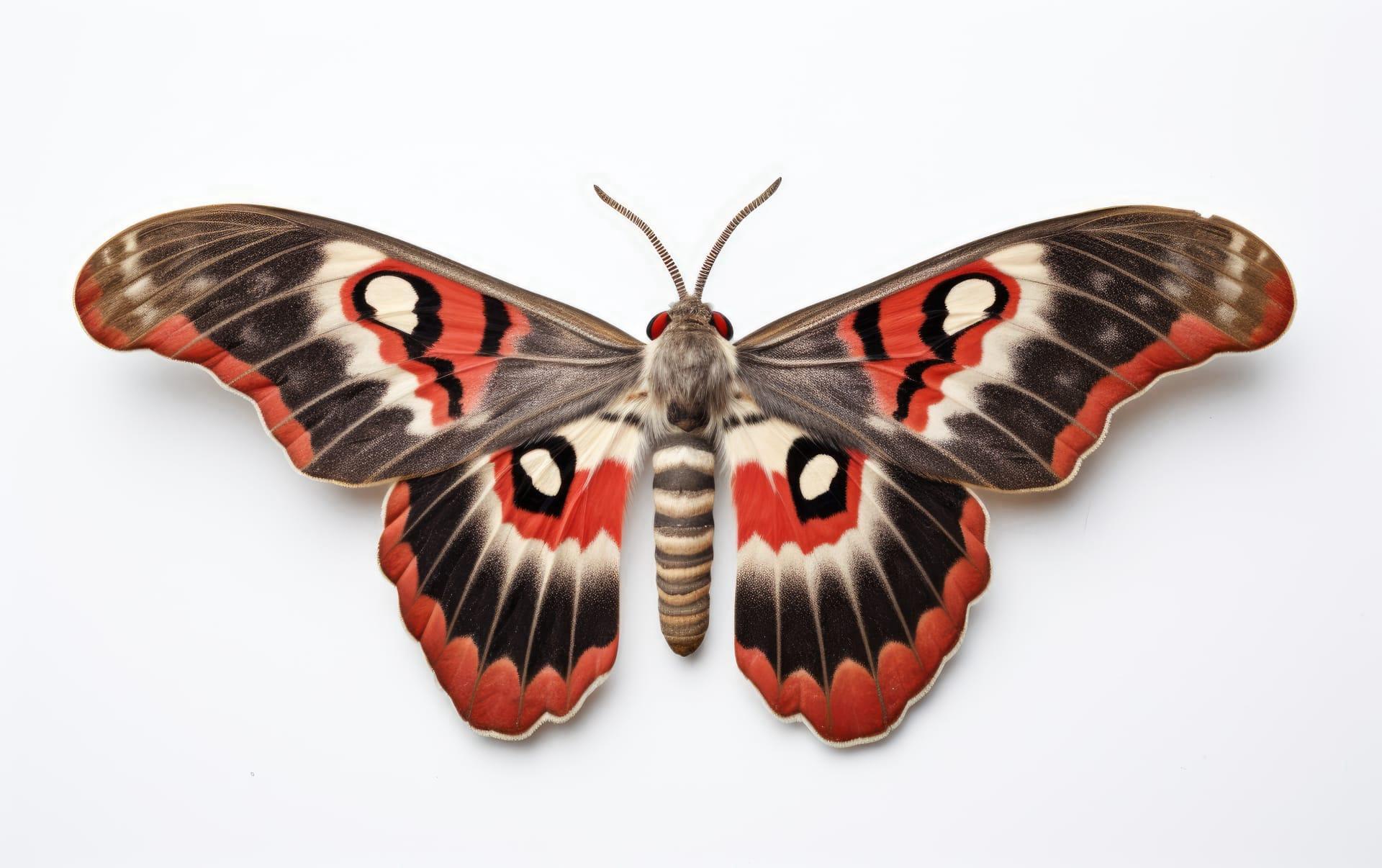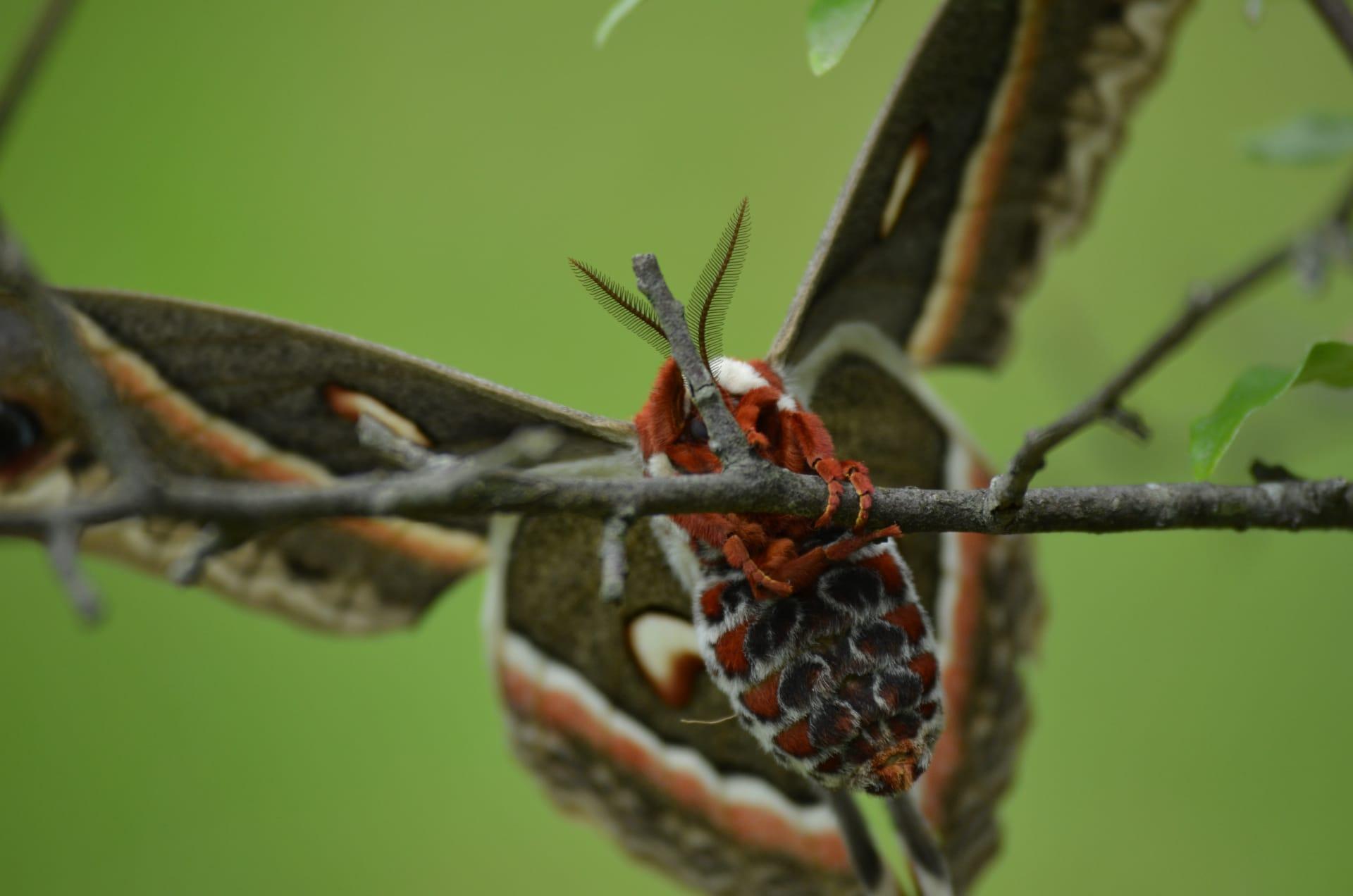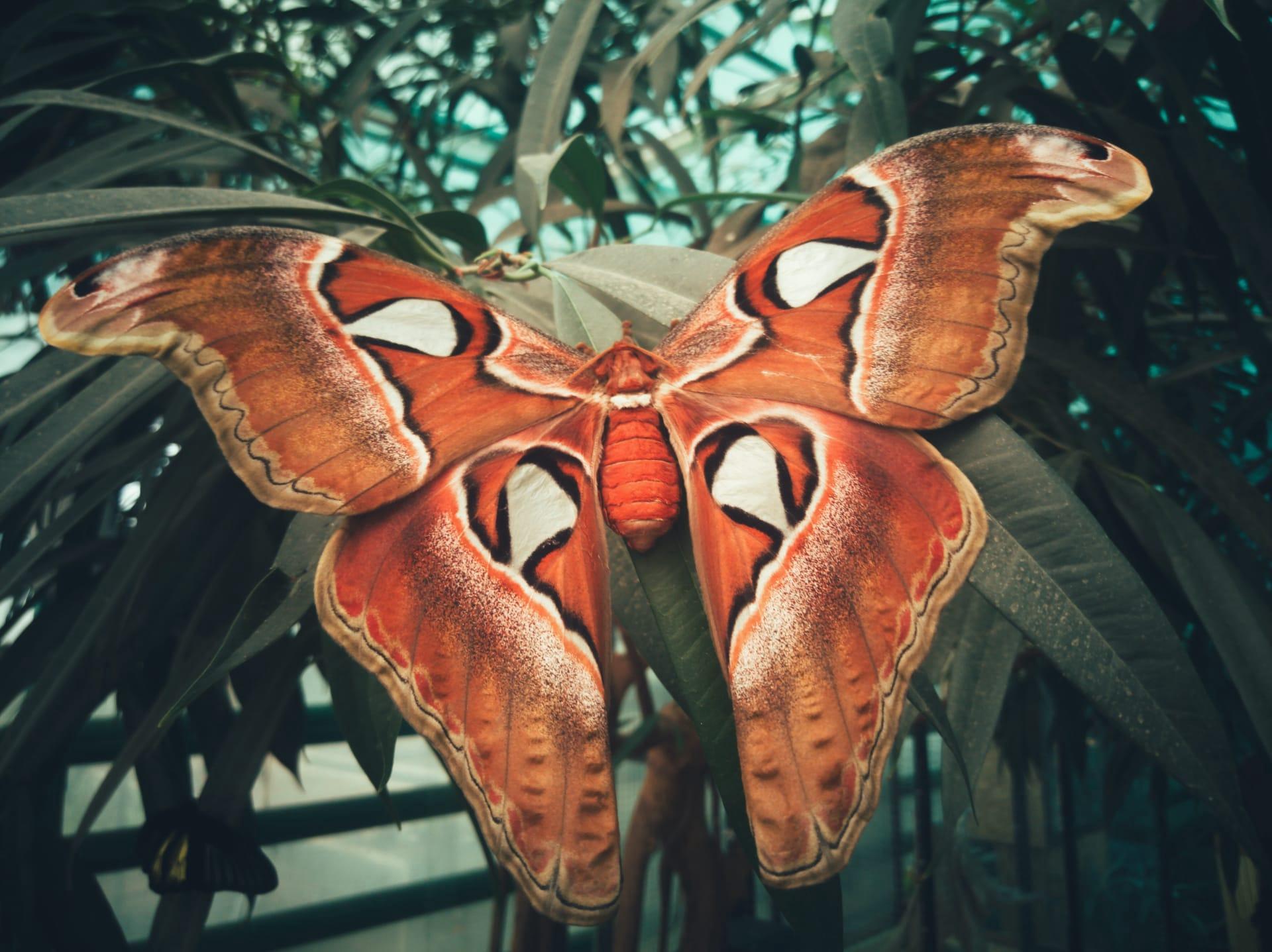Cecropia Moth
- Home /
- Mini Encyclopedia /
- Animal /
- Cecropia Moth
1
The Cecropia Moth, scientifically known as Hyalophora cecropia, belongs to the family Saturniidae, which is part of the larger order of Lepidoptera. This moth is recognized as North America's largest native moth, with a remarkable wingspan that can reach up to 7 inches (about 18 centimeters). The Cecropia Moth displays a vibrant array of colors, with red, white, black, and brown hues decorating its wings. These moths are particularly known for their striking eye spots on the wings, which serve as a defense mechanism against predators. The species is distinguished by its unique life cycle stages, including the egg, larva (caterpillar), pupa (cocoon), and adult moth stages.
The Cecropia Moth primarily inhabits forests and wooded regions across North America. Its range extends from the Rocky Mountains in the west to the Atlantic coast in the east, and from the southern parts of Canada down to Mexico. The moth prefers deciduous trees and shrubs, where it lays its eggs and where the caterpillars feed on the leaves. Common host plants for Cecropia caterpillars include maple, birch, and cherry trees. This wide distribution across various ecosystems is a testament to the moth's adaptability and resilience in different environmental conditions.

2
Question: Do Cecropia Moths eat and damage clothes like other moths?
Answer: Contrary to popular belief, Cecropia Moths do not eat clothes. This misconception arises from the generalization that all moths eat fabric. In reality, Cecropia Moths, during their adult stage, lack functional mouthparts and therefore do not feed at all. Their energy reserves are gathered during the caterpillar stage, where they consume leaves of host plants. The adult moth's primary purpose is reproduction, and they survive for about 7 to 14 days. The moths that are typically responsible for damaging clothes are different species, like the common clothes moth (Tineola bisselliella), which feed on materials like wool, silk, and cotton in their larval stage.

3
The Cecropia Moth's survival strategy is quite fascinating. During its larval stage, the caterpillar consumes large amounts of leaves, which allows it to grow rapidly. This voracious feeding enables it to store energy for its transformation into an adult moth, as adult Cecropia Moths do not eat. The caterpillar’s bright coloration serves as a warning to predators about its potential toxicity. When threatened, the caterpillar can also emit a foul-smelling fluid from its glands as an additional defense mechanism.
In the adult stage, the Cecropia Moth employs a different survival tactic. Its wings, adorned with eye spots, mimic the appearance of larger predators to deter potential threats. The moth also relies on its nocturnal nature to avoid many of its predators. Mating takes place at night, and females attract males by releasing pheromones. After mating, the female lays eggs on suitable host plants, ensuring the continuation of the species.

4
In the ecosystem, Cecropia Moths play a significant role in their interactions with various species. As caterpillars, they serve as a food source for birds, small mammals, and other insects. Their presence also influences the health and growth of their host plants. By consuming leaves, they contribute to the natural pruning of trees, which can stimulate new growth and maintain the balance of the forest ecosystem.
Moreover, Cecropia Moths are important pollinators in their ecosystem. While adult moths do not feed and therefore do not pollinate plants in the traditional sense, their movement from tree to tree during the mating process inadvertently assists in the transfer of pollen. This activity supports plant reproduction and biodiversity. Furthermore, their large size and distinctive appearance make them a subject of interest for nature enthusiasts and researchers, contributing to ecological education and awareness.

5
Film: "Wings of the Night: The Mystery of Moths" is a documentary produced in the United States in 2019. This film explores the intriguing world of moths, including the Cecropia Moth. It delves into their nocturnal behavior, survival strategies, and ecological significance. The documentary beautifully captures the transformation of the Cecropia Moth and highlights its role in the North American ecosystem.
Book: "The Secret Life of Moths" by Jonathan Alford, published in the USA in 2021, offers an in-depth look into the world of moths, with a special focus on species like the Cecropia Moth. Alford combines scientific research with engaging storytelling to bring the life cycle and ecological importance of these moths to readers. The book is well-regarded for making complex entomological concepts accessible to a broad audience.
Book: "Moths: Masters of Disguise" by Emily Stone, released in Canada in 2020, is a captivating exploration of moth species, including the Cecropia Moth. Stone's work emphasizes the adaptive features and survival techniques of moths. The book is praised for its detailed descriptions, high-quality photographs, and its ability to convey the wonder of these often-overlooked creatures to the general public.